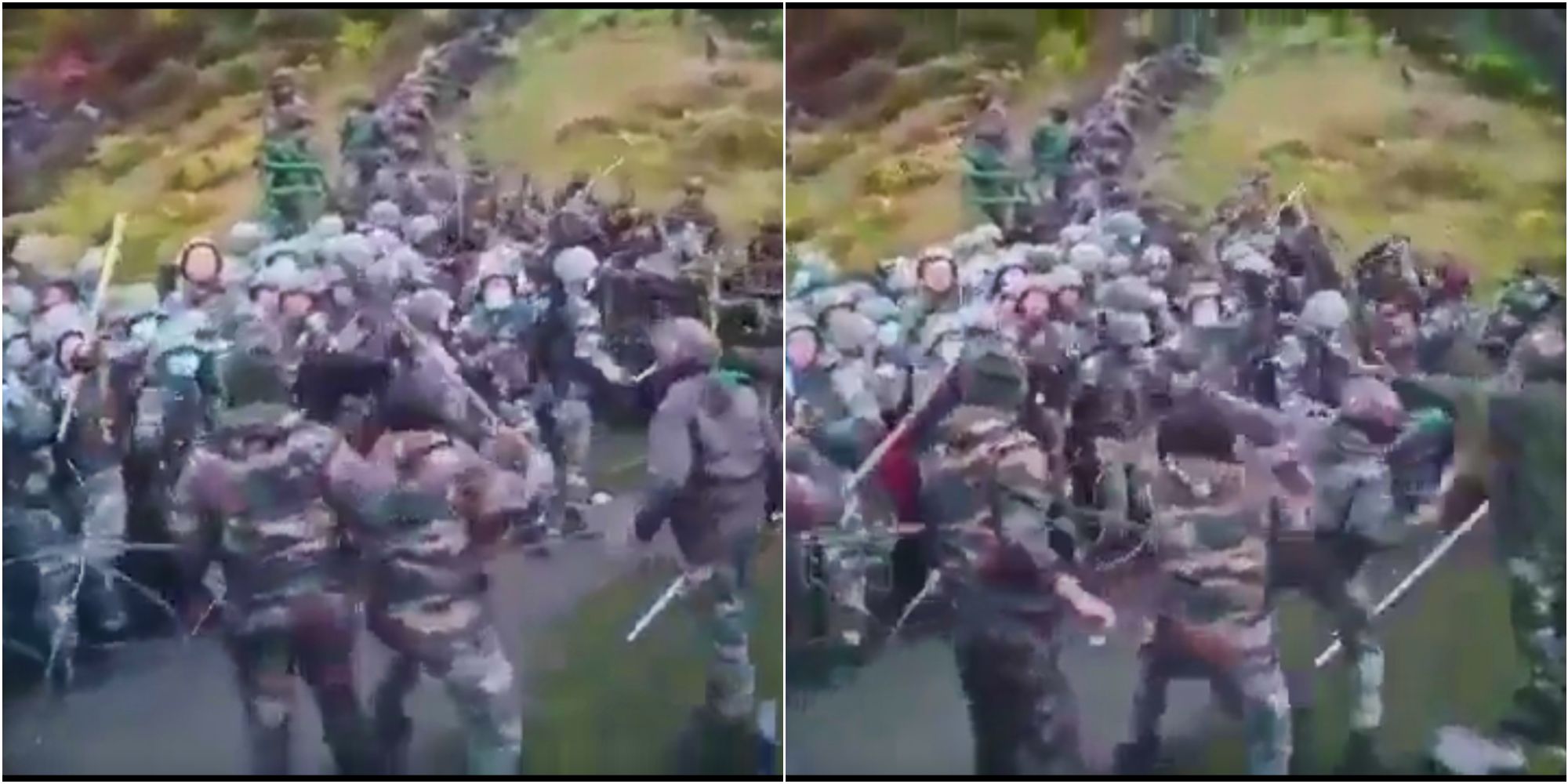Geopolitical experts have predicted that the threat of a second India-China war in the Himalayas is looming large, and they expect the conflict to break out anytime between 2025 and 2030.
However, the former Indian Army Chief differs in opinion, saying that post-Galwan clash in 2020, China is aware that the new India is no pushover and will not risk an escalation before resolving the Taiwan issue.
China has increased its defense spending by 7.2 percent in 2024 and has been steadily moving towards its goal of attacking Taiwan and unifying it with the Chinese mainland. This was revealed in an official work report recently reviewed by Reuters. In the report, China said it would “resolutely oppose separatist activities aimed at ‘Taiwan independence’ and external interference.”
China also removed the reference to “peaceful reunification” and stated that it would “be firm in advancing the cause of China reunification.”
Amidst this, the Royal United Services Institute (RUSI) ran a commentary titled “War Clouds over the Indian Horizon?”. In this, the author Samir Tata, the founder and President of International Political Risk Analytics, made an ominous prediction: “The second China–India War will most likely be fought in Eastern Ladakh in India’s far northwest region sometime between 2025 and 2030.”
The author contends that Beijing’s viewing of Eastern Ladakh (that belongs to India) through the lens of energy security will push China and India to war.
“Eastern Ladakh is the only pathway from which a hostile power can launch an attack to invade and occupy Kashgar, China’s crucial energy entrepot in the far Western province of Xinjiang. A vital pillar of China’s energy security is the planned land-based pipeline connecting Iran’s oil and gas fields to Kashgar, transiting through Pakistan via the China–Pakistan Economic Corridor (CPEC),” Tata points out.
General MM Naravane (retired), the former Indian Army chief, concurs with the reasoning. He concedes that Eastern Ladakh and Karakoram Pass are part of China’s long-term strategy as they are critical for their CPEC project. “But if Chinese feel that we are in a position to cut them off in CPEC, or in Pakistan-occupied-Kashmir or Tibet, it is a big change since 1962 (the year of the first war between India and China),” General Naravane told the EurAsian Times.
In 1962, India and China fought a brief and bloody war that overwhelmed Indian forces, who were caught napping.
General Naravane was the Indian Army Chief during the 2020 Galwan Clash. His memoir, ‘Four Stars of Destiny,’ was slated for a release in 2024 but has been postponed. The media reports enumerated the unprecedented details about the skirmish between the two forces on the night of June 15, 2020, when 20 Indian soldiers were killed, and casualties on the Chinese side remain unspecified.
The General claimed that the Galwan clash proved to be a watershed event between the two countries, the ties between whom have been strained for long due to an un-demarcated border. He emphasized that with the Galwan clashes, India shed its diffidence, and now, instead of using euphemisms for China, Indian policymakers refer to it by name.
“The 2020 action was followed by large-scale induction in Eastern Ladakh. We are equally strong. All this talk about the asymmetry of power is poppycock. There is no asymmetry when it comes to fighting in the mountains,” General Naravane asserted.
The deadly Galwan Valley clash was the first time that China’s People’s Liberation Army suffered “fatal casualties” in over two decades. The clashes served as a catalyst for troops on both sides to increase their combat readiness along the LAC.
In 2020, the Chinese had pitched over 80 tents on their Chinese side. The Indian Armed Forces did not lose any time and swung into action. Its entire transport fleet, including the C-130s and C-17s, were deployed. They airlifted 68000 troops, 330 infantry vehicles, and over 90 tanks and artillery guns, outfoxing China.
“The fact is the situation in Galwan is stalemated. They cannot do anything in that area as it is thick with troops—not just the Army but also the Air Force. A lot of surveillance systems have been put in place, so the question of being taken out of surprise is also out of question,” General Naravane added.

Lot On China’s Plate
General Naravane’s views were also echoed by Sana Hashmi, a scholar and policy expert in Taiwan. She has authored ‘China’s Approach Towards Territorial Disputes: Lessons and Prospects.’
Hashmi told the EurAsian Times: “There are pressing issues for China to deal with, such as economic woes such as a sluggish economy and drop in FDI. A lot of foreign companies are already concerned about their business in China. A war will make it worse.”
Understanding China’s future goals is important for fathoming its military strategies. China’s Communist Party (CCP) has set the goal of achieving “the great rejuvenation of the Chinese nation” by 2049. This includes expanding its national power, improving its governance systems, and revising the international order.
Experts see that the national rejuvenation plans by 2049 cannot be completed “peacefully.” The CCP leadership views the unification with Taiwan, Hong Kong, and Macau as fundamental goals. All areas of ambition in the Himalayas in India, Nepal, and Bhutan follow this goal. The whole Indo-China Peninsula is of prime importance to China because its tip controls the vital Malacca Strait and the possible Thai Canal, which can turn into the Achilles heel of the Chinese economy in case of a blockade.
“In the contentious issues that China would like to settle, Taiwan is the top priority. Why would Beijing change its priority order? The moment it opens front with India, Taiwan will be out of the question,” General Naravane added.
- Ritu Sharma has been a journalist for over a decade, writing on defense, foreign affairs, and nuclear technology.
- The author can be reached at ritu.sharma (at) mail.com
- Follow EurAsian Times on Google News




